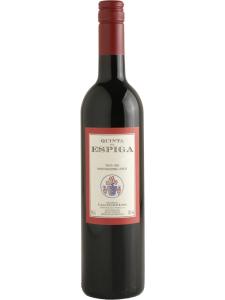Lisboa (formerly Estremadura) is a prolific wine region located at the center of Portugal's Atlantic coast. Despite being one of the country's most productive vinicultural areas, its name remains relatively obscure in wine terms, as its wines have traditionally been labeled with the names of the local sub-regions, which include Alenquer, Bucelas and Colares. The region is also home to Portugal's capital, Lisbon.
The region fell under the VR (Vinho Regional) classification until 2008, when the category was renamed IGP (Indicaciones Geográficas Protegidas) to bring it into line with the rest of Europe. When the switchover happened, the Portuguese wine authorities took the opportunity to rename the Estremadura appellation as Lisboa after Lisbon, which marks the region's southern boundary. There are nine DOCs in Lisboa, but many are more famous for their history than their modern wine industry. The most prestigious wines from the region fall under the Alenquer and Bucelas DOCs.
The region's position on the coast gives rise to the broad terroir that shapes the local wine industry. The Serra de Montejunto hills run north from Lisbon, and effectively divide Lisboa in half. Along the coast, the Atlantic batters the vineyards with high winds and autumn rains, making viticulture a challenge. The most notable DOC on this side of the hills is Colares, which is more famous for its phylloxera-resistant soils than its robust red wines made from Ramisco. The cool, wet conditions also shape the Lourinhã and Óbidos DOCs, famous for brandy and sparkling wine, respectively.
On the other side of the hills, the terroir is more forgiving, and is responsible for some of the region's best wines. Complex, full-bodied wines made from a range of classic Portuguese grape varieties like Touriga Nacional and Tinta Roriz typify the Alenquer DOC, while Bucelas makes fresh, minerally white wines from the Arinto grape variety. Further inland again lies the more famous region of Tejo.
Overall, the industry in Lisboa is dominated by a number of large cooperative wineries, although the current surge in Portugal's wine industry has created scope for several smaller outfits to thrive. Wine cooperatives are renowned for their commercial focus (there is little room for individual creativity and passion), so Lisboa wines have tended towards the practical rather than the expressive, and towards quantity rather than quality. As a result, the vine varieties planted in the region have been selected for their high yields and disease resistance, with very little emphasis on varietal expression or traditional stylistic considerations.
More than 30 grape varieties are used (Portugal rivals Italy in the diversity of its vine portfolio), the majority for white wine production. In the past few decades the likes of Cabernet Sauvignon and its Bordeaux stablemate Merlot have increasingly been used, as have Portugal's traditional (and superior) varieties Touriga Nacional and Tinta Roriz.


